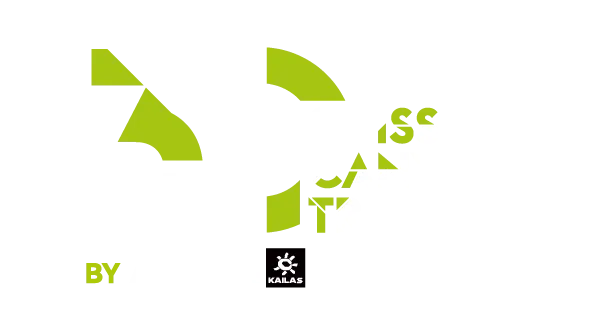ENVIRONMENT
Questions and answers
The Swiss Canyon Trail takes place in a region where the effects of climate change are particularly visible. Summer heat waves, marked drought periods, and the lack of snow in winter illustrate the changes that this region is confronted. Located not far from Brévine, often nicknamed "Switzerland Siberia", trail evolves in an environment where climate change also has a direct impact on local infrastructure, including ski resorts. One of them, formerly open from December to March, only works a few days a year.
In 30 years of existence, the Swiss Canyon Trail has witnessed these developments. More recently, the race itself had to face events, such as violent thunderstorms that threaten to disrupt or even cancel its smooth running. Although these phenomena are natural, their intensity and their frequency increase with increasingly short return periods, direct reflection of global climate change.
Aware of these issues, the Swiss Canyon Trail strives to be a responsible player by minimizing its environmental footprint. Each year, he seeks to improve his sustainable practices and limit his greenhouse gas emissions. Although the event alone cannot reverse the climatic trend, it aims to serve as a model and precursor in terms of sustainability for other races of the same scale.
By now in a global setting, the Swiss Canyon Trail offers a unique experience to runners from all over the globe. At the same time, it actively aware of its international community on climatic issues, stressing the importance of collective action and shared responsibility in the face of these challenges.
The Swiss Canyon Trail (SCT) undertakes to refine its carbon neutrality plan for the years to come. Although it is not a particularly emitting greenhouse gas (GHG) event, certain associated activities, such as transport and indirect electricity use, generate emissions that are to reduce or compensate as much as possible.
The main challenge lies in the environmental impact linked to transport. Thanks to its international renown, the SCT attracts trailers around the world, which generates significant air traffic, with the environmental consequences that this implies. If, to date, it remains difficult to completely eliminate the use of the plane while maintaining the global dimension of the event, the SCT seeks to put in place compensatory measures. In addition, he will actively encourage participants and spectators to favor more sustainable means of transport, such as the train, for those who have the possibility (Trail by Train Tour).
With this in mind, the SCT will develop its carpooling network and will strengthen access to rail transport. Various innovative tools are currently being developed, including a “Trail to Train” calculator to optimize participants' journeys, as well as a platform dedicated to carpooling. These initiatives aim to reduce the impact of plane and car trips, while facilitating more environmentally friendly alternatives.
With these measures, the Swiss Canyon Trail aims to become a model of sustainable event on an international scale, reconciling sports performance, preservation of the planet and awareness of its global community.
Adopting eco-responsible concepts, such as the use of reusable dishes, provision of local food, limitation as well as waste sorting, are essential measures to have good ecological dynamics. On the course, these initiatives help protect fragile biodiversity, by reducing the negative impacts linked to human activities.
In addition, the use of local food products decreases transportation distances, which limits greenhouse gas emissions and supports regional producers. These choices promote a sustainable approach, respectful of both ecosystems and local communities.
By integrating these practices into its organization, the Swiss Canyon Trail affirms its commitment to minimize its ecological footprint while raising awareness among participants and spectators with the importance of responsible behavior.
The preservation of biodiversity is a major issue for the region where the Swiss Canyon Trail takes place. The development of industrial and residential areas gradually transforms agricultural land into built areas, reducing natural spaces each year.
The race, although it highlights the beauty of these landscapes, also exerts some pressure on the environment. The trails borrowed, often identical from one year to the next, suffer a direct impact on the ground, local flora and fauna. Aware of these effects, the Swiss Canyon Trail undertakes to limit its ecological footprint as much as possible and to act in favor of biodiversity.
To compensate, or even surpass the impact of the event, the SCT seeks to actively participate in various conservation projects. These initiatives aim to protect local ecosystems while raising awareness of runners and spectators with the importance of preserving the natural richness of the region. Thanks to these actions, the Swiss Canyon Trail is not content to be a sporting event, but also becomes a vector of protection and valuation of biodiversity.
In collaboration with the environmental authorities of the cantons of Neuchâtel and Vaud, the Swiss Canyon Trail aims to actively contribute to local initiatives to preserve and enhance the environment. The objective is to finance concrete projects while participating in their development and their implementation.
On the occasion of this 30ᵉ edition, and for the years to come, the SCT wishes to initiate or support one to two projects per year. These actions aim to raise awareness of runners and spectators about the richness of this region and the beauty of its wilderness.
To strengthen this approach, the SCT wants to offer anyone the possibility of getting involved directly in these projects, in a financial or even physical way. The development of these is currently being discussed.
Together, let's make this sporting adventure an opportunity to preserve and celebrate the unique environment, on and outside the route, which makes the Swiss Canyon Trail.
Forest landscapes, vast pastures, deep gorges and Jura crests offer an exceptional and unique natural setting. Running on these trails is immersing himself in a world where humans find his right place: small in front of the immensity of the surrounding nature. The majestic trees, the breath of the wind and the murmur of the waters create a symphony that accompanies each step of the runner.
The preservation of this natural beauty is made possible thanks to respect for practitioners. Each runner plays a key role while staying on the marked trails, avoiding trampling on fragile flowers, leaving no waste behind him and respecting the fauna in silence, without disturbing wild animals. This responsible attitude allows everyone to live an authentic and harmonious experience in the heart of this preserved nature.
With a little luck, runners will have the opportunity to observe a rich and discreet fauna or to attend unforgettable natural shows, such as a golden sunrise or the shimmering colors of forests in autumn.
Since its creation, the Swiss Canyon Trail has always highlighted an essential value: the pleasure of running in the heart of nature. More than just a race, the SCT is a sensory and emotional adventure where each runner can reconnect to the essentials and leave with imperishable memories.

